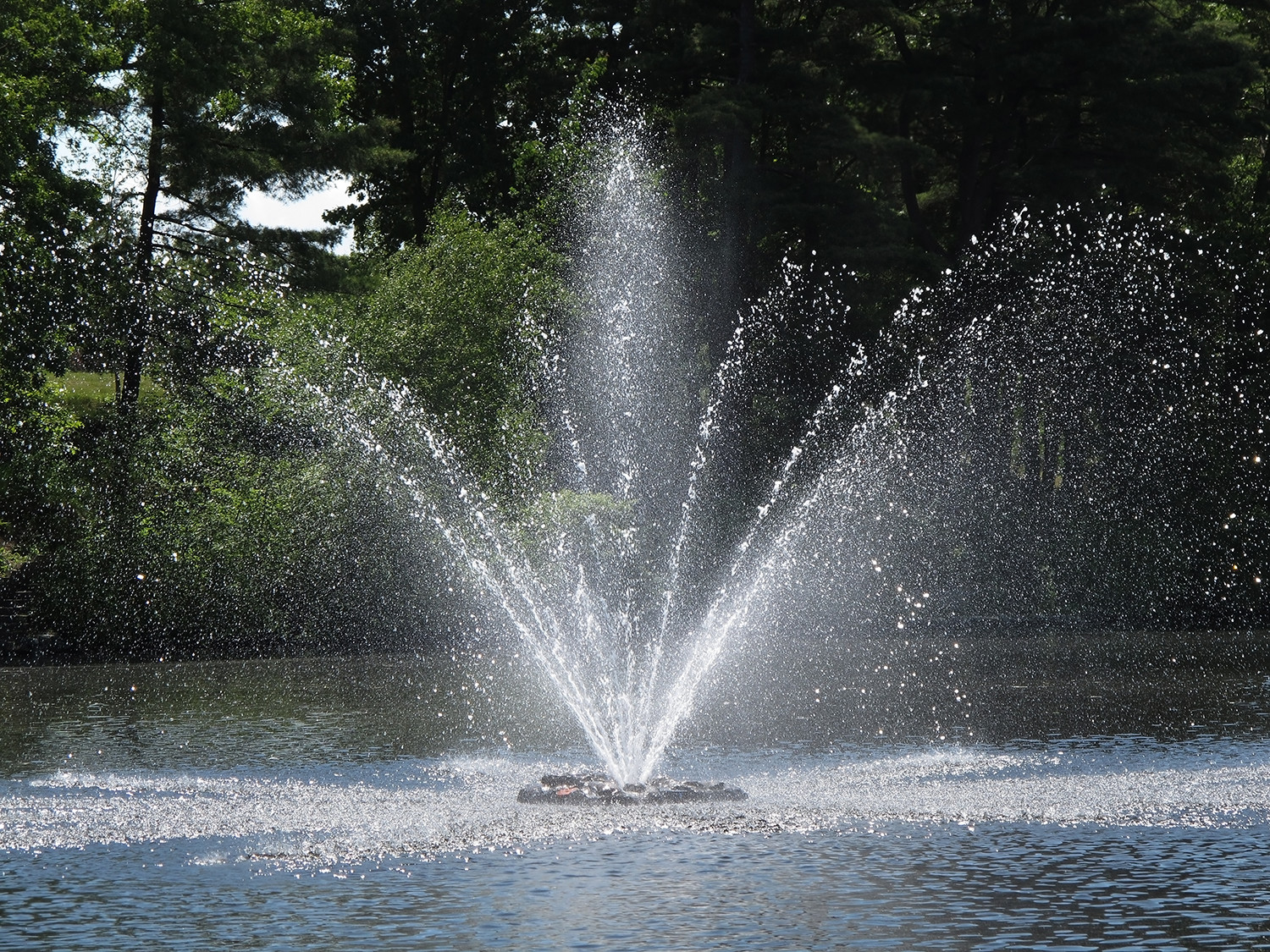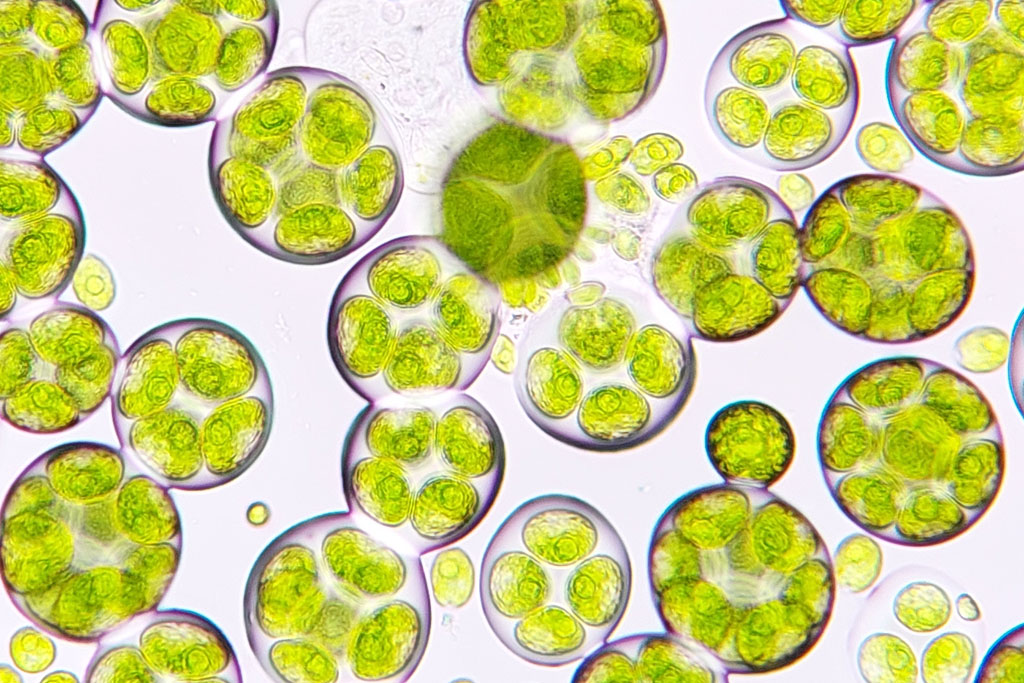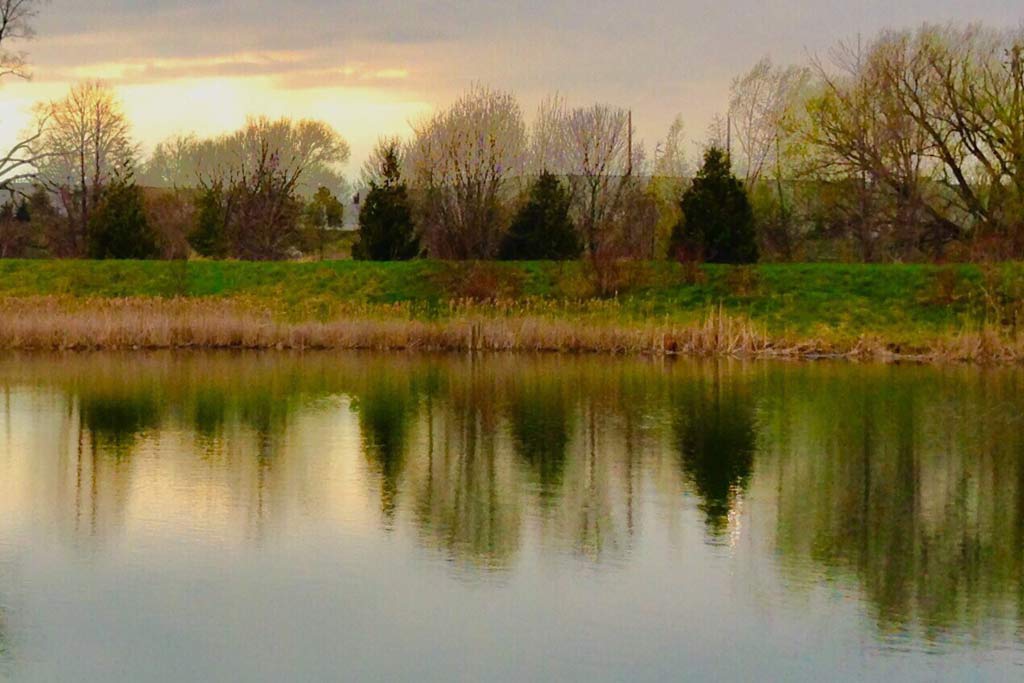By Chris Ryan, Aquatics Department Manager
A properly sized aeration system is a critical component in maintaining healthy lakes and ponds. Artificial destratification and the resulting introduction of oxygen into an aquatic environment provides these ecosystems with numerous benefits.
Aeration works on the principle of bringing anoxic (oxygen depleted) water from the bottom of a lake or pond to the surface where oxygen gets diffused into the water at the air-water interface. In the presence of oxygen, a multitude of benefits are seen. Increased oxygen concentrations cause phosphorus to readily bind with naturally occurring iron, making the phosphorus unavailable and, in turn, limiting algae growth. Oxygen also promotes aerobic (oxygen requiring) bacterial growth which consumes excess nutrients and organic sediment. In addition, proper aeration produces a more hospitable environment for fish and reduces the probability of both summer and winter fish kills.
The two primary means of aeration in today’s industry are either surface aerators or lake bed aeration systems. Surface aerators utilize in water electric motors, typically affixed to a float, to move water at the surface via propeller or impeller. Lake bed aeration systems are comprised of an onshore compressor delivering compressed air to diffusers located at the bottom of a lake or pond. Both systems are equally capable of achieving the desired results but do have very different conditions under which their maximum potential can be achieved.
Surface aerators are categorized as decorative fountains, aerating fountains, and high-volume mixers, with each unit offering progressively more aeration then the former. While surface aeration offers the added benefit of visual appeal, the more elaborate and complex the spray pattern the less effective it is at aerating. Even though water movement is located just below the surface, the cohesive nature of water and its strong hydrogen bond allows a surface aerator’s impact to extend much further below the water’s surface than the actual unit. Surface aeration is most effective in shallow water environments but can be useful in depths up to six to eight feet before lake bed aeration becomes the preferred option.
Lake or pond bed aeration is a low impact aeration system offering no visual appeal and maintains a water body’s natural appearance. The lack of in water electricity also makes these systems ideal for applications in areas used for swimming. The process of diffusing compressed air through a porous material located at the bottom of a lake or pond creates a gentil updraft carrying with it water. Lake or pond bed aeration is most effective in deeper water, with the deeper the water column the air must travel through to reach the surface the greater the water movement. In water depths less than six to eight feet. lake or pond bed aeration systems start to lose their efficiencies and surface aeration becomes the better option.
While a lake or pond’s water depth play a defined role in determining the best system for the application, circumstantial influences such as an organization or individual’s needs, financial budgets, and water use restrictions are also guiding factors in choosing the right system. Regardless of which system you choose, ILM has certified repair technicians on hand to maintain your system for you.




